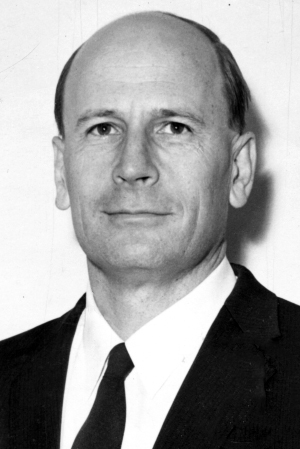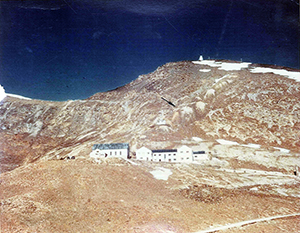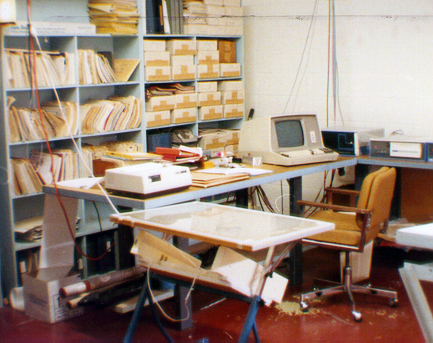An Appreciation of Victor H. Regener
By Derek Swinson
(written in 2021)
Victor's father, Professor Erich Regener, was head of the German Physical Society, and his home was frequently filled with guests who were the cream of the crop of Europe's finest physicists. Victor grew up in this environment, and made many friends.
Victor got his PhD, and worked with his father, measuring the cosmic ray intensity at various depths under water in Lake Constance (Bodensee) in southern Germany.
When Hitler came to power in Germany, it was revealed that Victor's mother had Jewish antecedents, and Victor's father was removed from his role as head of the German Physical Society. At that point Victor moved to Rome to work under Bruno Rossi, the leading cosmic ray physicist of his time. However, when Italy joined the Axis with Germany, Victor moved again, this time to the University of Chicago to work with Arthur Compton, the winner of the Nobel Prize for Physics for explaining the Compton effect.
Victor Regener and Compton assembled a complex cosmic ray detector to study cosmic rays at high altitudes. The University of Denver operated two high altitude labs in the Rocky Mountains: One on top of Mount Evans at 14,000 ft altitude, and one at Echo Lake (on the same mountain) at 10,000 ft altitude. There is a road, which goes all the way to the top of Mt Evans, but it is only accessible in the summer months, being snowed in in winter. Victor was sent to the top of Mt Evans, where he deployed his experiment for the summer.
When I arrived at UNM, before the start of the fall semester 1965, I discovered that two of Dr. Regener's underground cosmic ray telescopes were already in operation and were being funded by NSF. One was in an abandoned tin mine, close to the High Altitude Cosmic Ray Laboratory, at an altitude of 5,300 m, at Mount Chacaltaya in Bolivia. Dr. Regener had already published two papers on the analysis of the Chacaltaya data in the Proceedings of two International Cosmic Ray Conferences in 1960 and 1962. A second cosmic ray telescope had recently been located in Embudo cave near the bottom of one of the ski runs at the Sandia Peak ski area.
By the late 1960s it became clear that we would need a larger teaching and student lab facility. Victor Regener designed the entire building complex (later of course named after him, Regener Hall), lecture hall and undergraduate teaching labs. There was a heliostat on the roof that allowed Victor to project a large image of the sun onto a screen in the lecture hall for his students to see. Usually there were a number of sunspots, visible as large black dots on the surface of the sun's image. As time progressed, the sunspots rotated with the sun, and after 27 days the sunspots were back at their location on day one, confirming the 27-day rotation period of our sun.
Victor was by then free to turn his attention to his other research interests. One of these was the design and building of a space experiment for the NASA OGO (Orbiting Geophysical Observatory) satellite. The particle detector to be flown on the satellite was designed and built in the department by him, with assistance from our machine shop and our electronics technicians to NASA's specifications, and delivered to NASA completely ready and tested. I know of no other scientist who NASA would trust to design and build a complete package, tested and ready to fly.
Victor's heritage at UNM is immense. He designed and built the Capilla Peak telescope and observatory. He spent many nights there after a full day's work at UNM. He designed and built an amazing set of large-scale pieces of physics demonstration equipment as an aid for those of us teaching first and second year physics classes. He was an amazing mentor into the world of writing proposals to agencies that funded research. He was a fount of knowledge that he shared with brand new Assistant Professors, and he stood up for his faculty facing ridiculous action by the UNM administration.
In those days the age of forced retirement was 65 years. Victor was not ready to retire. He bought a building (at 7200 Jefferson NE) where he could continue working. He built a machine shop closely resembling the one in our P&A department. He retained close ties with those students and myself who he had worked with at UNM, and he continued as co-author of papers on our cosmic ray research. Co-authors were (not all at the same time) myself, Richard St. John, and Victor's son Eric (a mathematician and musician). Victor and I often would have lunch together. He was both my friend and advisor. I miss him greatly.
Victor Regener Episodes
By David Wolfe
Victor was remarkable although I did not know him as well as Derek Swinson. But I do remember that Byron Dieterle and I started commuting to LANL (Los Alamos National Lab) in a Chevy truck, from 1950. It broke down several times on the way and we often had trouble with it. So Victor called John Perovich, then head of UNM Finance or some such. And said, "My boys need a car." So we got a brand new big station wagon bought for us which we used for several years and which stayed in the department for a very long time.
I can also remember Victor, in his big Oldsmobile, roaring back to the Department at about 8 am after being up all night at the Capilla Peak observatory. And then working in the Department all day. Amazing, I thought. And still do.
Another thing I remember was the day I came in April or May 1971 to interview for a job. Vic had sent me a ticket from Seattle (where I was at UW) to Albuquerque via Denver. But I changed it and came via San Francisco since I interviewed at UC Santa Cruz. And that ticket cost $100 more. When Victor picked me up at the airport he asked if that ticket change had cost more. I said yes, $100. He reached into his pocket, took out $100 and gave it to me. Very impressed I was (and still am).
Comment
By John Panitz (who did not overlap with Victor Regener on the faculty):
When I decided to retire, I built a machine and glass shop, and later a museum. Victor's accomplishments were an inspiration even for me!
Episode
By John McGraw (who also did not overlap with Victor Regener on the faculty):
When I arrived at UNM I was pleased to discover that P&A was the "home base" of Victor Regener, who was well known as a pioneer of space physics and astronomy.
I recall a story told to me on my first tour of P&A. I commented on the fact that the layout suggested multiple additions, and that they must have been difficult to justify to the UNM administration. I was told that one such "justification" event was a Saturday tour of the "then" P&A for the Regents, to provide first-hand experience of the need for another addition. Regener virtually demanded that everyone from Professors to grad students … and maybe some undergrads show up on that Saturday and be diligently at work during the tour. Following the tour Regener pointed out how cramped were the P&A facilities, and concluded with "… and this is a WEEKEND!" The addition was built.
I believe this could have happened.
Episodes
By Colston Chandler:
I recall another Victor story. A graduate student from Greece, Constantine Cassapakis, told the story about soon after his arrival he was looking at a bulletin board in the hall of the PandA building when Vic walked up and introduced himself because he did not recognize Cassapakis. That a chairman of the department should be interested in a lowly beginning graduate student greatly surprised Cassapakis, but he was even more surprised when Vic began quoting Homer
in classical Greek (which Vic had studied as a school boy in Germany).
I visited Vic in the hospital a couple of days before he was whisked off to Florida to die there. He asked me who I was, which surprised me because he had recruited me to the department and we had known each other for years. So, imagining his mind was fading, I answered with my name. He answered that he knew that but wanted to know who I was. That led to a long conversation at a much deeper level. At the end he said something like "you are one of our successes" and dismissed me by rolling over in bed. That was the last time I saw him.



